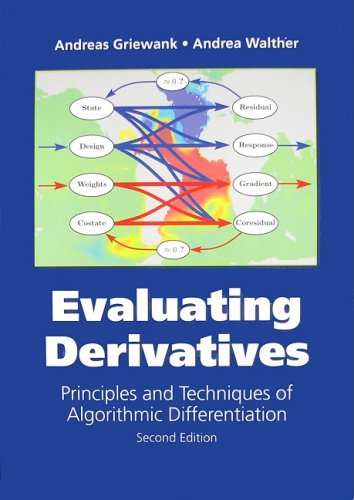

Most ebook files are in PDF format, so you can easily read them using various software such as Foxit Reader or directly on the Google Chrome browser.
Some ebook files are released by publishers in other formats such as .awz, .mobi, .epub, .fb2, etc. You may need to install specific software to read these formats on mobile/PC, such as Calibre.
Please read the tutorial at this link: https://ebookbell.com/faq
We offer FREE conversion to the popular formats you request; however, this may take some time. Therefore, right after payment, please email us, and we will try to provide the service as quickly as possible.
For some exceptional file formats or broken links (if any), please refrain from opening any disputes. Instead, email us first, and we will try to assist within a maximum of 6 hours.
EbookBell Team

5.0
70 reviewsAD has been applied in particular to optimization, parameter identification, nonlinear equation solving, the numerical integration of differential equations, and combinations of these. Apart from quantifying sensitivities numerically, AD also yields structural dependence information, such as the sparsity pattern and generic rank of Jacobian matrices. The field opens up an exciting opportunity to develop new algorithms that reflect the true cost of accurate derivatives and to use them for improvements in speed and reliability.
This second edition has been updated and expanded to cover recent developments in applications and theory, including an elegant NP completeness argument by Uwe Naumann and a brief introduction to scarcity, a generalization of sparsity. There is also added material on checkpointing and iterative differentiation. To improve readability the more detailed analysis of memory and complexity bounds has been relegated to separate, optional chapters.The book consists of three parts: a stand-alone introduction to the fundamentals of AD and its software; a thorough treatment of methods for sparse problems; and final chapters on program-reversal schedules, higher derivatives, nonsmooth problems and iterative processes. Each of the 15 chapters concludes with examples and exercises.
Audience: This volume will be valuable to designers of algorithms and software for nonlinear computational problems. Current numerical software users should gain the insight necessary to choose and deploy existing AD software tools to the best advantage.
Contents: Rules; Preface; Prologue; Mathematical Symbols; Chapter 1: Introduction; Chapter 2: A Framework for Evaluating Functions; Chapter 3: Fundamentals of Forward and Reverse; Chapter 4: Memory Issues and Complexity Bounds; Chapter 5: Repeating and Extending Reverse; Chapter 6: Implementation and Software; Chapter 7: Sparse Forward and Reverse; Chapter 8: Exploiting Sparsity by Compression; Chapter 9: Going beyond Forward and Reverse; Chapter 10: Jacobian and Hessian Accumulation; Chapter 11: Observations on Efficiency; Chapter 12: Reversal Schedules and Checkpointing; Chapter 13: Taylor and Tensor Coefficients; Chapter 14: Differentiation without Differentiability; Chapter 15: Implicit and Iterative Differentiation; Epilogue; List of Figures; List of Tables; Assumptions and Definitions; Propositions, Corollaries, and Lemmas; Bibliography; Index